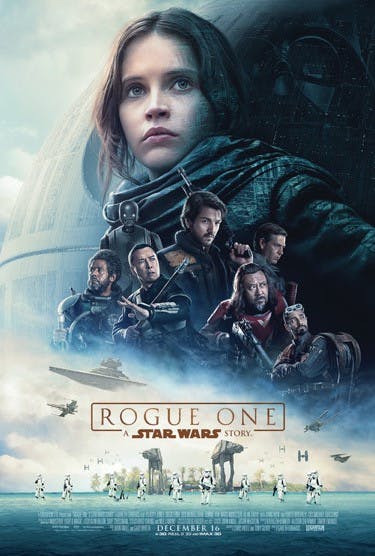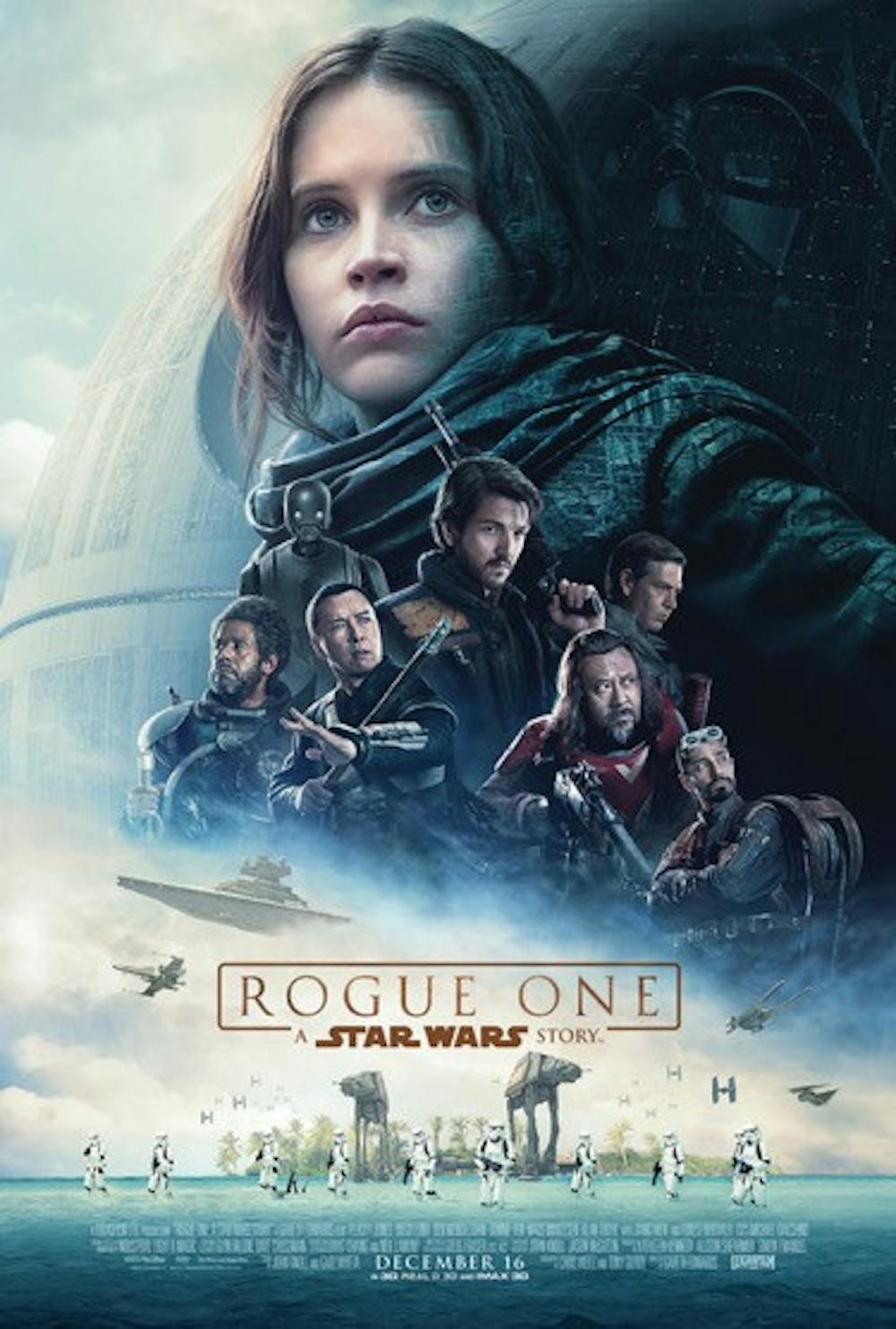“Rogue One” is an integral part in the Star Wars universe, but nevertheless a strong story in its own right.
By Paris Garnier

Although all major spoilers will be avoided, some minor ones will be discussed.
The five human protagonists, Jyn Erso (Felicity Jones), Cassian Andor (Diego Luna), Bodhi Rook (Riz Ahmed), Chirrut Imwe (Donnie Yen), and Baze Malbus (Jiang Wen), come together for their cause despite differences in ideology and personal motivations.
Despite having only a handful of characters from previous films, “Rogue One” made use of the lore and the expanded universe. There are fresh faces, but they’re are nevertheless engaging.
“Rogue One” showed a grimmer side of the Rebel Alliance. Some characters kill without hesitation for the sake of the rebellion’s survival, while others, like Saw Gerrera (Forest Whitaker) use tactics that are considered too extreme even for the espionage and assassination within the Alliance.
The defining trait of “Rogue One” is its setting. It’s well built and recalls the somewhat dirty, retro-but-futuristic aesthetic of the original trilogy, but the cinematography is sharp. X-Wing pilots have dingy helmets, the Death Star plans look like they’re stored on a Betamax, but every detail is clear.
Speaking of refurbished, the reprogrammed Imperial security droid K-2SO (Alan Tudyk) provides a dry running commentary that keeps things fresh. Imagine R2-D2, but comprehensible, or C-3PO with no neuroses and a terrifying silhouette.
The battles are intimate. Death hovers in almost every scene and there are so, so many explosions. The war is less conceptual than it was in the original trilogy, as much of the fighting is on foot. This doesn’t detract from the aerial battles, which are stunning.
The plot thread involving the retrieval of the Death Star plans didn’t begin until about the third act. However, this did nothing to slow the pace and gave the characters room to breathe. Everyone got a moment to be funny, to interact, to show what they value.
The biggest faults in this movie would be the use of CG on some characters’ faces, like the not-yet-Grand-Moff Wilhuff Tarkin (Guy Henry), as well as Darth Vader’s costume design. Both were close to the originals, as Peter Cushing, the original Tarkin, died in 1994, but not close enough avoid the uncanny. Vader’s suit lacked its usual embellishments, which lent it a Halloween-costume type of vibe.
https://www.youtube.com/watch?v=sC9abcLLQpI
Perhaps it was just the costume, but Vader’s presence was overall off. No longer the imposing terror he was in “A New Hope,” his status as a cultural icon has somewhat drained him of his mysticism. That said, “Rogue One” obliges him his carnage.
The narrative did have other weaknesses, but they’re significant spoilers, and nothing worthy of missing out on seeing it in theater. It was by no means perfect, but none of its predecessors have been, either.
“Rogue One” did not leave room for guessing. It’s slot in the saga’s timeline was snug and it clarifies questions raised by the original trilogy, namely, “How could a single perfect weakness possibly exist on the Death Star?”
Instead of an exposition screen crawl, “Rogue One” had a cold open. However, it felt more like a Star Wars movie than “The Force Awakens” did. It was not a film about ancient prophecies and one single dramatic family, but about loss and second chances. Despite other movies being integral to its inner logic, “Rogue One” was uncomplicated and refreshing.
Film Review: “Rogue One: A Star Wars Story”

Heads up! This article was imported from a previous version of The Campus Citizen. If you notice any issues, please let us know.




